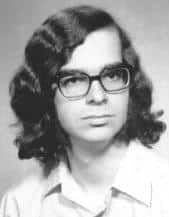
When heading off to college, Vatican astronomer, Jesuit Brother Guy Consolmagno, struggled with picking a major.
“When I was a freshman, I had no idea what I wanted to study. No idea at all,” the Detroit native, 62, told the Denver Catholic. “I loved everything—and I couldn’t choose among them.”
His best friend was going to Massachusetts Institute of Technology (MIT), a private research university in Cambridge among the most difficult in the country to get in to.
“I saw that (MIT) had the largest collection of science fiction, so I (figured), ‘What could I major in, that wouldn’t destroy me, so I could read science fiction?’” he said. “And I found a department called earth and planetary science.”
Planets, I’ll do that, he decided.
“I had no idea it was really the geology department,” he recalled. “I get there and discovered that among the rocks that you study are rocks that fall from the sky—meteorites. I had no idea there were such things.
“That was incredibly exciting and it’s been my passion ever since.”
He went on to earn bachelor and master’s degrees in earth and planetary sciences, a Ph.D. in planetary science from the University of Arizona, and served as a postdoctoral fellow and lecturer at the Harvard College Observatory.
But after all that education, he said, he got “fed up” and began wondering, “Why am I doing astronomy when people are starving in the world?”
He quit astronomy, joined the Peace Corps and was assigned to serve in Kenya. People there saw his background and said, “Please teach us astronomy.”
“So I wound up teaching astronomy,” Brother Consolmagno said. “The people in Kenya were the ones that taught me how important it is to be connected to the bigger universe, because it feeds your soul.”
Those two years reinvigorated his life, he said, and sparked a passion for teaching that led him to join the Jesuit order. After taking vows as a Jesuit brother in 1991, he was assigned as an astronomer for the Vatican Observatory in 1993, where he’s served since. He splits his time between the Vatican’s main telescope at Castel Gandolfo, the pope’s hilltop summer residence and vacation retreat outside Rome, and another one on a mountaintop near Tucson, Ariz.
“They ordered me to go to Rome,” he said, joking about being obedient in accepting such a beautiful assignment, “and take care of a collection of more than 1,000 meteorites.”
Brother Consolmagno has also served as the curator of the Vatican meteorite collection, one of the largest in the world; and been on governing boards of the Meteoritical Society, International Astronomical Union’s Division III, Planetary Systems Science, among others; and co-authored five books on astronomy.
He took on the role as head of the Vatican Observatory Foundation about six months ago, a group that raises funds to support the telescopes, and “shows the world” the science that the Church is supporting, he explained.
He will be the keynote speaker at an event for the campus ministry of the Colorado School of Mines April 7 at St. Joseph Church in Golden. There he will speak to students of the engineering university specializing in geosciences, as well as others, about his book, “God’s Mechanics: How Scientists and Engineers Make Sense of Religion.”
After interviewing engineers in Silicon Valley about their religious life for the book, he related their comments with philosophical reflections and the faith, and found there are many questions “we all have in common,” he said, whether a scientist or engineer, or even an agnostic or atheist.
“The trouble is too many people stop learning about religion at 10. Same with science,” he said.
He is looking forward to speaking to this particular group, he said, one that shares his passion for science and engineering.
“I’m talking to ‘my people,’ they get my jokes,” he said with a laugh.
And while jokes may be part of his talk, speaking with authority is key with an audience such as this, he added.
“Engineers and scientists are not impressed by a title or education,” he said. “When they ask, ‘Why should I listen to you?’ You’ve got to give them an answer.”
Events begin with 5:15 p.m. Mass, followed by drinks and dinner, and will conclude with Brother Consolmagno’s talk at 8 p.m. Tickets are $50, or $80 per couple. St. Joseph’s is located at 969 Ulysses St. in Golden. For more information, visit www.minescatholic.weebly.com or email mineschaplain@gmail.com.
>>> Has Pope Francis visited the Vatican Observatory?
 “Absolutely,” according to Brother Consolmagno, astronomer at the observatory more than 20 years, and Jesuit brother of the pope. “We had an audience with him with our summer school students last summer.”
“Absolutely,” according to Brother Consolmagno, astronomer at the observatory more than 20 years, and Jesuit brother of the pope. “We had an audience with him with our summer school students last summer.”
Also during his first summer as pope, 2013, he visited Castel Gandolfo, where the observatory is located, though he doesn’t take his vacations there like other popes, Brother Consolmagno said.
“He had lunch with us,” he said. “It was a very nice private lunch. He had a great time, it was all very informal.”
For Father José Funes, S.J., director of the Observatory, the lunch was also a reunion of sorts.
“When (Father Funes) was thinking of entering the Jesuits, the Jesuit who interviewed him was Father Bergoglio,” he explained, “because José is also from Argentina.”
Argentine native “Father Bergoglio” is now Pope Francis.




